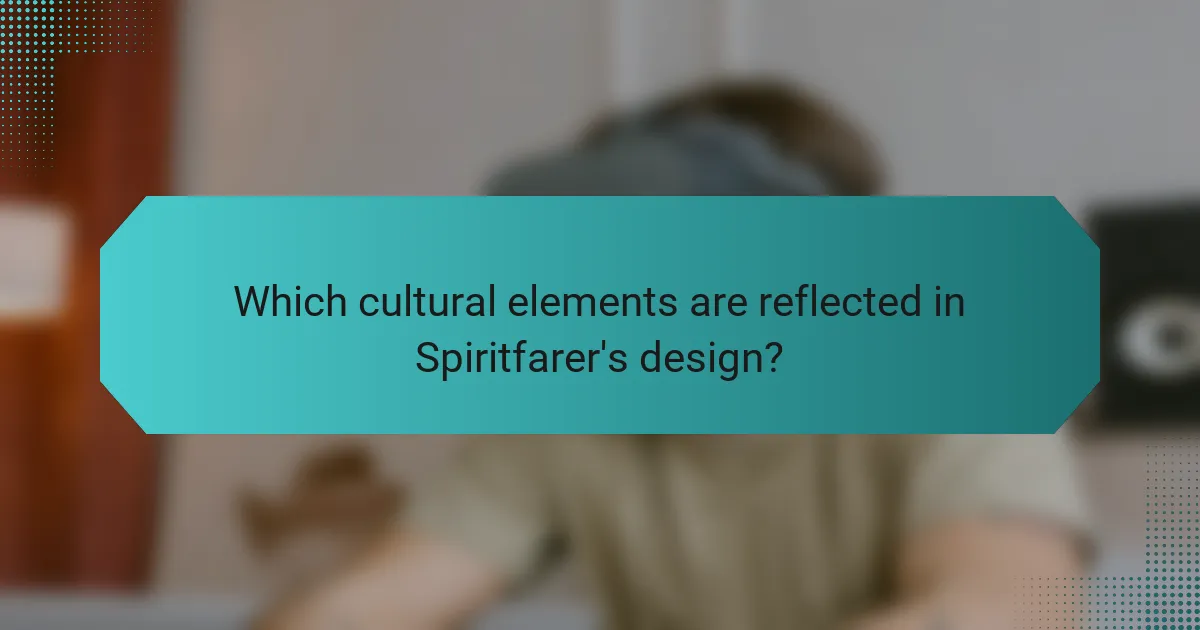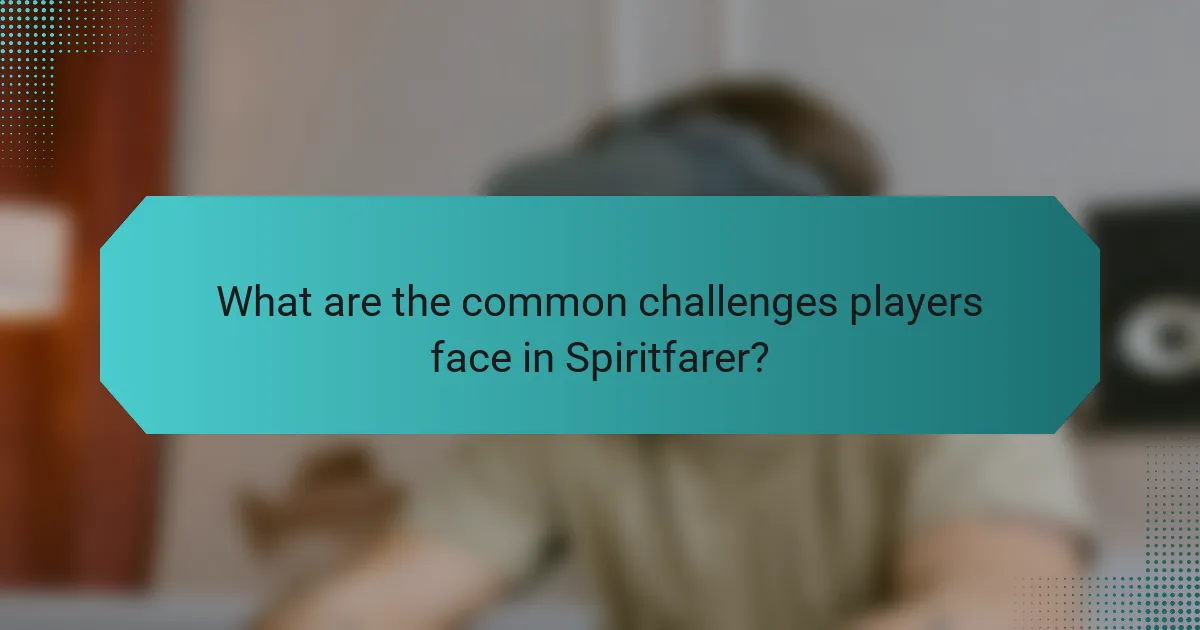Spiritfarer offers players a profound emotional journey through its exploration of loss and acceptance. The game features impactful storytelling, engaging gameplay mechanics, and deep character development. Players build relationships with spirits while managing resources and navigating the narrative’s emotional depth. This unique blend enhances the overall experience, creating lasting connections with the characters.

What makes Spiritfarer’s emotional storytelling impactful?
Spiritfarer’s emotional storytelling is impactful due to its deep exploration of themes like loss and acceptance. The game’s unique attribute lies in its ability to personify death through relatable characters. Players engage in meaningful interactions that evoke empathy, enhancing emotional resonance. The gameplay mechanics, such as crafting and building relationships, further deepen this connection, allowing players to experience personal growth alongside the characters. This blend of narrative and mechanics creates a powerful emotional journey that resonates with players.
How do character arcs enhance the narrative experience?
Character arcs significantly enhance the narrative experience in “Spiritfarer” by fostering emotional connections and driving character development. As players guide spirits to their afterlife, they witness profound transformations that reflect themes of acceptance and closure. Each character’s journey reveals unique attributes, such as personal struggles and growth, which deepen player engagement and empathy. This emotional storytelling elevates gameplay mechanics, making interactions meaningful and memorable. Ultimately, character arcs serve as a vehicle for exploring complex emotions, enriching the overall narrative experience.
In what ways does the setting contribute to emotional depth?
The setting in Spiritfarer enhances emotional depth through its immersive environments and narrative design. Each location reflects the character’s journey and emotions, fostering a connection with players. The hand-drawn art style creates a serene atmosphere, while dynamic weather and day-night cycles evoke feelings of nostalgia and contemplation. As players explore, they encounter unique landscapes that symbolize the characters’ pasts, enriching the storytelling experience. This thoughtful design encourages empathy and reflection, making the emotional impact more profound.
Why are themes of loss and acceptance central to the gameplay?
Themes of loss and acceptance are central to Spiritfarer’s gameplay because they drive emotional engagement and character development. Players navigate the journey of guiding spirits to the afterlife, confronting grief and the inevitability of farewells. This core mechanic fosters deep connections with characters, as players experience their stories of loss and acceptance through meaningful interactions. The game’s mechanics, such as resource management and exploration, reflect the emotional weight of these themes, enhancing the overall narrative experience. By integrating loss and acceptance into gameplay, Spiritfarer creates a profound exploration of mortality and relationships.

How do gameplay mechanics support the overall experience?
Gameplay mechanics in Spiritfarer enhance the overall experience by fostering emotional connections and supporting character development. These mechanics, such as resource management, exploration, and relationship-building, create a rich environment for storytelling. For instance, the act of building and customizing the boat serves as a metaphor for nurturing relationships with spirits. Additionally, gameplay encourages players to engage deeply with characters, leading to a more impactful narrative. By integrating gameplay with emotional themes, Spiritfarer ensures that each mechanic contributes meaningfully to the player’s journey.
Which core mechanics define the Spiritfarer gameplay loop?
The core mechanics defining the Spiritfarer gameplay loop include resource management, crafting, exploration, and emotional storytelling. Players gather resources to build and upgrade their boat, interact with spirits, and navigate the world. Each mechanic enhances character development and deepens the narrative experience. Resource management involves collecting materials, while crafting allows players to create items that aid in gameplay. Exploration introduces new areas and spirits, enriching the emotional storytelling aspect. This loop creates a unique blend of gameplay and narrative engagement.
How does resource management influence player decisions?
Resource management significantly influences player decisions in Spiritfarer by shaping emotional connections and gameplay strategies. Players must balance resource allocation to build relationships with spirits while navigating their journeys. Effective management enhances character development and narrative depth, as players feel the weight of their choices on both gameplay outcomes and emotional storytelling. The unique attribute of Spiritfarer lies in its blend of resource management and narrative, fostering a reflective experience about life and loss. As a result, players engage more deeply with the game’s themes and characters.
What role does exploration play in the game’s mechanics?
Exploration is central to Spiritfarer’s gameplay mechanics, driving emotional engagement and character development. Players navigate a beautifully crafted world, discovering new islands and resources that enhance their journey. This exploration fosters connections with spirits, revealing their backstories and emotional arcs. Each discovery not only enriches gameplay but also deepens the narrative, making exploration a vital component of the overall experience.

How does character development unfold throughout the game?
Character development in Spiritfarer unfolds through meaningful interactions and emotional storytelling. Players guide spirits, fostering growth by addressing their pasts and fulfilling their unique requests. Each character’s journey reveals their backstory, deepening emotional connections. The gameplay mechanics, such as resource management and exploration, enhance these narratives, creating a rich tapestry of relationships that evolve throughout the game. This blend of storytelling and mechanics ensures that character development remains central to the player’s experience.
What are the unique attributes of each character in Spiritfarer?
Each character in Spiritfarer possesses unique attributes that enhance their emotional depth and gameplay experience.
Chicory is an artist who struggles with self-doubt but expresses creativity through painting. Giovanni is a former musician who yearns for recognition and connection. Atul is a jovial chef who embodies joy and the importance of family bonds. Summer is a nurturing figure who represents love and the passage of time. Bruce and Mickey are a duo that showcases themes of companionship and conflict resolution. Finally, Astrid is a strong-willed character who emphasizes resilience and personal growth. Each character’s attributes contribute significantly to the narrative and gameplay mechanics.
How do player choices affect character relationships?
Player choices significantly shape character relationships in Spiritfarer. Decisions impact emotional bonds, dialogue options, and character arcs. For example, prioritising certain characters influences their development and the player’s experience. This dynamic fosters a deeper connection between players and characters, enhancing storytelling. Choices can lead to unique interactions, revealing rare attributes of characters that may not surface otherwise.
What are the emotional outcomes of character interactions?
Character interactions in Spiritfarer evoke deep emotional outcomes, fostering connections and personal growth. Players experience empathy and reflection as they navigate relationships with spirits. Each character’s unique backstory enriches the narrative, leading to moments of joy, sorrow, and closure. These emotional arcs enhance gameplay, making the journey impactful and memorable.

Which cultural elements are reflected in Spiritfarer’s design?
Spiritfarer’s design reflects various cultural elements, emphasizing emotional storytelling and character relationships. The game incorporates diverse artistic styles, inspired by Japanese and Scandinavian aesthetics, creating a visually rich experience. Its narrative structure draws from various mythologies, exploring themes of death, grief, and acceptance, which resonate across cultures. Additionally, the gameplay mechanics encourage cooperation and community building, mirroring communal values found in many cultures. The unique attribute of Spiritfarer lies in its respectful portrayal of different cultural backgrounds, enhancing the player’s emotional connection to the characters and their stories.
How does the game represent different cultural beliefs about death?
Spiritfarer represents diverse cultural beliefs about death through its narrative, character interactions, and gameplay. The game explores themes of acceptance, transition, and the afterlife, reflecting various cultural perspectives. Each spirit embodies unique backgrounds and traditions, showcasing how different cultures perceive death and the journey beyond. For instance, characters like Charon and Atul symbolize different beliefs about guiding souls, emphasizing the significance of rituals and connections. This emotional storytelling fosters a deeper understanding of mortality and encourages players to reflect on their own beliefs.
What influences can be seen in character design and storytelling?
Character design and storytelling in “Spiritfarer” are influenced by emotional depth, cultural themes, and gameplay mechanics. The game emphasizes the journey of guiding spirits, which enhances character development through unique backstories. Each character embodies distinct attributes, such as unresolved regrets or cherished memories, which deepen the narrative experience. The gameplay mechanics, including resource management and exploration, complement the storytelling by fostering emotional connections with characters. This synergy creates a rich, immersive environment that resonates with players, illustrating the profound impact of design choices on narrative engagement.

What are the common challenges players face in Spiritfarer?
Players in Spiritfarer commonly face challenges such as resource management, emotional connections with characters, and navigating the game’s narrative depth. These elements require balancing gameplay mechanics with the emotional weight of farewells. Resource management involves gathering materials and upgrading the boat, which can be time-consuming. Emotional connections arise as players build relationships with spirits, leading to poignant moments of loss. Navigating the narrative depth requires players to make meaningful choices that impact their journey and the spirits they guide.
How can players overcome emotional fatigue during gameplay?
Players can overcome emotional fatigue during gameplay by taking intentional breaks, engaging in self-reflection, and practicing mindfulness. These strategies enhance the emotional experience in Spiritfarer, allowing players to recharge and connect deeply with the narrative. Breaks can prevent burnout, while self-reflection helps players process the emotional themes of loss and acceptance. Mindfulness techniques, such as focusing on the present moment, can enrich the gameplay experience and foster a greater appreciation for character development.
What strategies help manage resource scarcity effectively?
Effective strategies for managing resource scarcity in Spiritfarer include prioritising resource collection, optimising inventory management, and building relationships with characters for unique benefits. Focus on completing requests to unlock essential resources and enhance gameplay. Utilise the boat’s upgrades to improve efficiency in resource gathering. Engaging with characters deepens emotional storytelling while providing access to rare items, creating a balance between narrative and mechanics.

What best practices can enhance the Spiritfarer experience?
To enhance the Spiritfarer experience, players should focus on emotional storytelling, engaging gameplay mechanics, and character development. Prioritising character interactions deepens emotional connections. Exploring the world encourages discovery and resource management. Completing side quests enriches the narrative and provides unique rewards. Balancing upgrades and ship improvements enhances gameplay flow. Engaging with the art style and music creates an immersive atmosphere.
Which tips can improve emotional engagement with the game?
To improve emotional engagement with Spiritfarer, focus on personal connections, narrative depth, and gameplay choices.
1. Develop relationships with characters by exploring their backstories and fulfilling their requests.
2. Embrace the game’s art style and music to enhance emotional immersion.
3. Make meaningful choices that impact character development and story outcomes.
4. Share personal stories and experiences during gameplay to create a deeper connection.
5. Reflect on the themes of loss and acceptance, which resonate throughout the game.
6. Engage with the community to share insights and experiences, fostering a shared emotional journey.
How can players maximize character development opportunities?
Players can maximize character development opportunities by engaging deeply with each spirit’s story and completing their requests. Building relationships enhances character growth and unlocks new abilities. Prioritising resource collection and upgrades further strengthens characters. Additionally, exploring the world and discovering hidden areas reveals unique interactions and storylines.
What common mistakes should players avoid in Spiritfarer?
Players should avoid common mistakes in Spiritfarer to enhance their experience. One major error is neglecting to fully explore each area. This limits resource gathering and character interactions. Another mistake is not prioritising upgrades for the boat, which can hinder travel efficiency. Additionally, failing to manage relationships with spirits can lead to missed story opportunities. Lastly, overlooking the importance of cooking can impact the well-being of spirits and their willingness to stay.